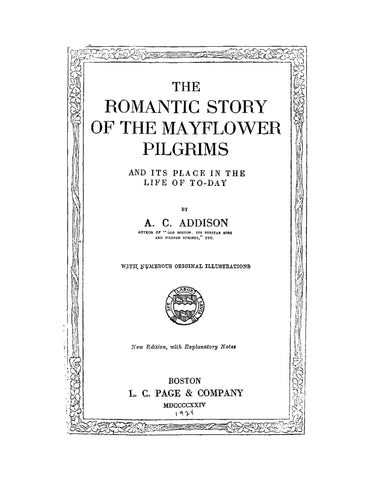
MAYFLOWER, MA: The Romantic Story of the Mayflower Pilgrims and its Place in the Life of To-Day
by A C Addison. 1924. 192p
In a Pilgrim cell, reminiscent of the dark and narrow dungeons inhabited by the Pilgrim Fathers over three centuries ago, the atmosphere is somber yet rich with historical significance. The present-day gaoler, though less severe than his Puritan predecessor, sets the scene by locking visitors in, allowing them to experience a brief taste of captivity. Despite the gloomy setting, the cell is now illuminated by the autumn sunlight streaming through open doors, casting a temporary brightness on the otherwise dreary space.
The cell itself is a stark reminder of the harsh conditions endured by those who were once imprisoned within its confines. With walls a foot and a half wide and five feet deep, the space is cramped and oppressive, evoking a sense of confinement and isolation. The bare stone floor and boarded roof contribute to the overall dingy and musty atmosphere, creating an eerie silence that hangs heavy in the air. Despite its uninviting appearance, the cell holds a sacred history, serving as a pilgrimage site for those seeking to connect with the struggles and triumphs of the past.
As visitors stand within the cell, arms outstretched, they can almost touch the opposite walls with their fingertips, emphasizing the narrowness and confinement of the space. The cell extends back seven feet, with a height that barely allows for standing room, further enhancing the sense of restriction and captivity. Despite its physical limitations, the cell holds a profound significance as a symbol of religious persecution, loyal resolve, and the quest for spiritual freedom. It stands as a testament to the enduring legacy of the Pilgrim Fathers and their journey towards a new land and a brighter future.
